Question:1
According to the following picture, is it permitted to deviate to the opposite lane?
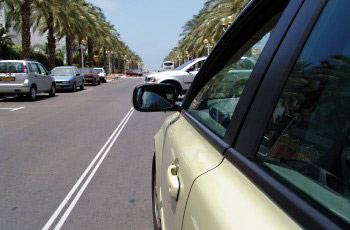
Category : Safety
Question:2
What are the components of the stopping distance?
Category : Safety
Question:3
How would you handle the following situation?
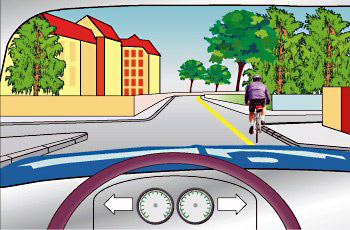
Category : Safety
Question:4
The silver vehicle (1) exits from parking while driving in reverse. What would be your reaction?
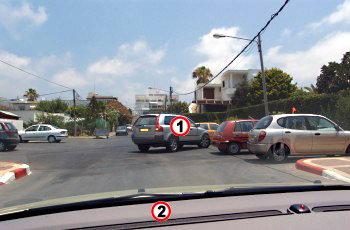
Category : Safety
Question:5
When are we required to keep a more-than-customary distance from the vehicle driving in front of us?
Category : Safety
Question:6
You step on the brake pedal and feel that the service brake (foot brake) is not working. What will you do?
Category : Safety
Question:7
While turning, what natural force pushes the vehicle against the direction of the turn?
Category : Safety
Question:8
The ability to control the vehicle in order to prevent accidents:
Category : Safety
Question:9
What is the first stage in getting back on the road from the “hard shoulder”?
Category : Safety
Question:10
Choose the only correct sentence:
Category : Safety
Question:11
What effect does driving whilst keeping proper distance from the vehicle in front has on the vehicle’s fuel consumption and wear?
Category : Safety
Question:12
What risk is a driver facing while making a right turn?
Category : Safety
Question:13
“Drinking alcohol has a negative effect on the driver’s ability to react”: Correct or incorrect?
Category : Safety
Question:14
How are you required to conduct yourself according to the situation depicted in the following picture?
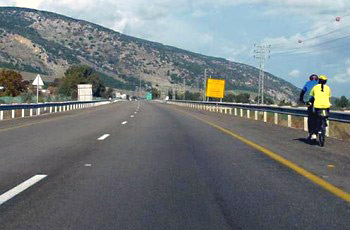
Category : Safety
Question:15
What are you required to do when you see that the overtaking silver vehicle intends to return to the right lane?
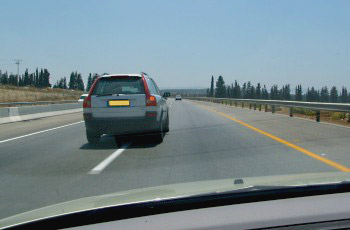
Category : Safety
Question:16
A cement mixer is:
Category : Safety
Question:17
What are the actions you are required to take, before intentionally pulling onto the “hard shoulder” of a non-urban road?
Category : Safety
Question:18
How is a driver required to conduct himself when intending to overtake a school transport bus that stopped to pick-up and let down children?
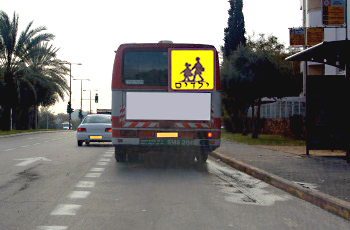
Category : Safety
Question:19
Braking distance is the distance the vehicle passes?
Category : Safety
Question:20
In which direction should a motorcyclist focus his sight when entering into a turn?
Category : Safety
Question:21
What are the risks of driving in high speeds?
Category : Safety
Question:22
What is special about the operation of the motorcycle’s brakes?
Category : Safety
Question:23
What are the tedious driving conditions described in the following picture?
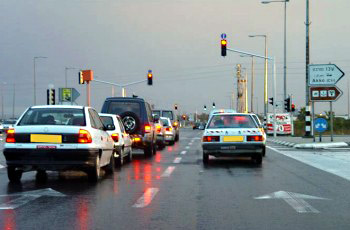
Category : Safety
Question:24
On a sharp curve, slow down:
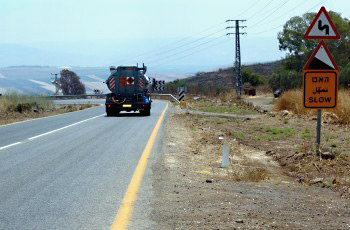
Category : Safety
Question:25
What are the advantages in looking far ahead?
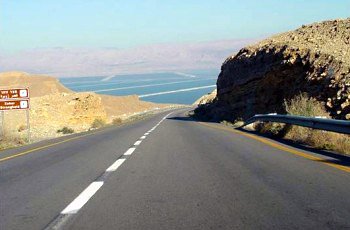
Category : Safety
Question:26
What should you do when your driving lane is blocked by the double-parked silver vehicle (marked with a circle)?
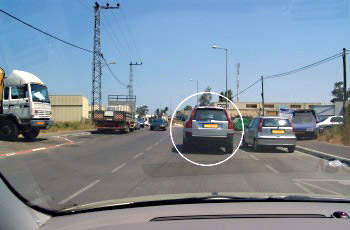
Category : Safety
Question:27
How should you conduct yourself when detecting an oily and slippery area on the roadway while making a turn?
Category : Safety
Question:28
Is there a connection between the driver’s judgment and the use of drugs and alcohol?
Category : Safety
Question:29
What is required from a driver that approaches the road signs appearing in the following picture?
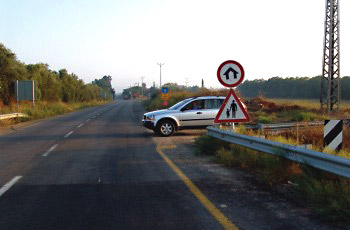
Category : Safety
Question:30
How will a dirty front lamp influence night driving?
Category : Safety

